How To Maximize Testosterone
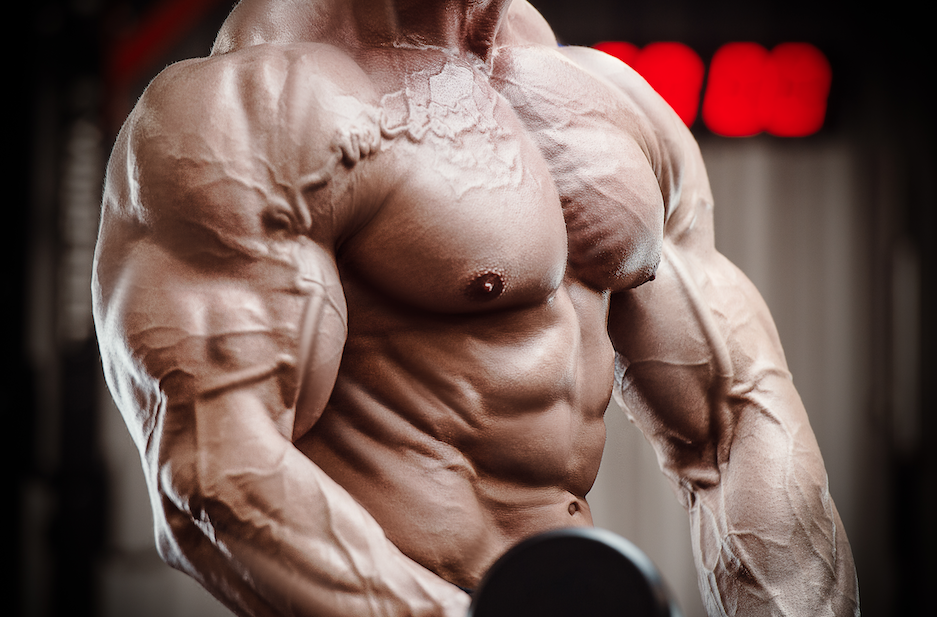
In bodybuilding, we talk a lot about testosterone and for good reason. Testosterone is the primary anabolic hormone in our bodies. It’s responsible for the amount of muscle we carry, much the same way that annual rainfall determines the amount of vegetation that the land can support. As testosterone levels go up, muscle growth follows.
Testosterone works through a number of different mechanisms to maintain and build muscle mass. By eating plenty of protein, testosterone enhances protein synthesis in muscle tissue. In between protein meals, testosterone increases the efficiency of amino acid recycling within muscle cells, thereby sparing muscle mass. Testosterone, by way of aromatization into estrogen, increases GH and IGF-1 levels. In the short term, this has a significant impact on satellite cell number and activity which is necessary for significant increases in muscle mass to be possible. Over the long term, elevated levels of these hormones can help to shift your body composition from fat to lean mass. Clearly, all the fuss over testosterone is well-deserved!
 Before we get into ways to alter the levels and/or effectiveness of the testosterone we have floating around in our body, I want to mention that resistance training favorably alters the activity of testosterone in muscle tissue. Now, I’m not talking about what testosterone does to muscle cells. I’m talking about a muscle cell’s ability to respond to testosterone. Lifting weights increases the number of androgen receptors in muscle cells. Testosterone is an androgen, and weight training enhances the sensitivity of whatever muscle you train to testosterone by increasing the number of receptors that testosterone uses to produce its anabolic effects. So, right off the bat, a well-designed training program is going to increase the effectiveness of the testosterone you already have.
Before we get into ways to alter the levels and/or effectiveness of the testosterone we have floating around in our body, I want to mention that resistance training favorably alters the activity of testosterone in muscle tissue. Now, I’m not talking about what testosterone does to muscle cells. I’m talking about a muscle cell’s ability to respond to testosterone. Lifting weights increases the number of androgen receptors in muscle cells. Testosterone is an androgen, and weight training enhances the sensitivity of whatever muscle you train to testosterone by increasing the number of receptors that testosterone uses to produce its anabolic effects. So, right off the bat, a well-designed training program is going to increase the effectiveness of the testosterone you already have.
Still, all of this raises the question: Is there any way to naturally increase testosterone levels? Yes, there are two possibilities. The first is diet. This may or may not surprise some of you. The second is supplementation, which again might surprise some of you, not because we are talking about supplements and raising testosterone, but because the supplements we’ll discuss might not be the ones you’re thinking of.
Total Testosterone
 “Total testosterone” is regulated by a system in your body called the hypothalamic-pituitary-gonadal axis (HPG-axis). The hypothalamus both monitors and adjusts the amount of testosterone you make. It does this by controlling the pituitary gland which signals your testes to make more testosterone.
“Total testosterone” is regulated by a system in your body called the hypothalamic-pituitary-gonadal axis (HPG-axis). The hypothalamus both monitors and adjusts the amount of testosterone you make. It does this by controlling the pituitary gland which signals your testes to make more testosterone.
Unbound vs. Free Testosterone
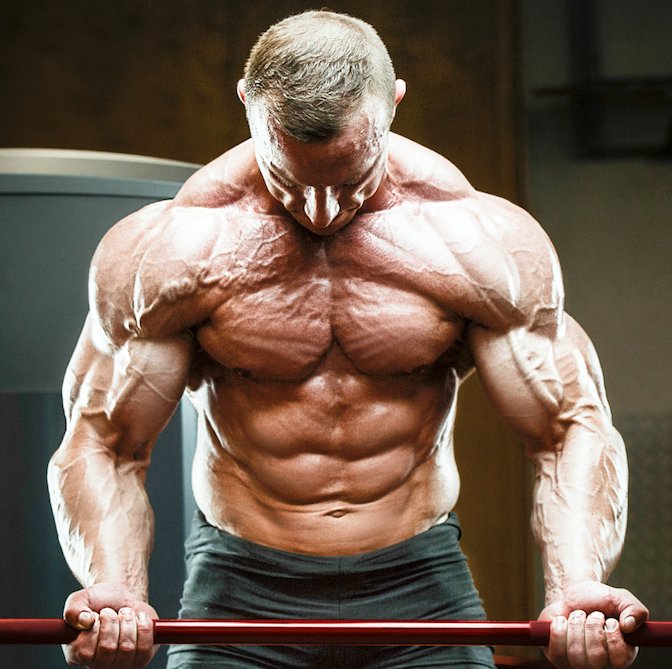 “Unbound testosterone” is determined by the amount of sex hormone binding globulin (SHBP) you make. SHBG is basically a transport protein that binds most serum testosterone, thus preventing it from entering muscle cells. The fraction of testosterone not bound to SHBG is called “free testosterone.” In a nut shell, it’s the amount of free testosterone (because it can freely enter muscle cells) that has the greatest impact on muscle growth.
“Unbound testosterone” is determined by the amount of sex hormone binding globulin (SHBP) you make. SHBG is basically a transport protein that binds most serum testosterone, thus preventing it from entering muscle cells. The fraction of testosterone not bound to SHBG is called “free testosterone.” In a nut shell, it’s the amount of free testosterone (because it can freely enter muscle cells) that has the greatest impact on muscle growth.
Diet & Hormones
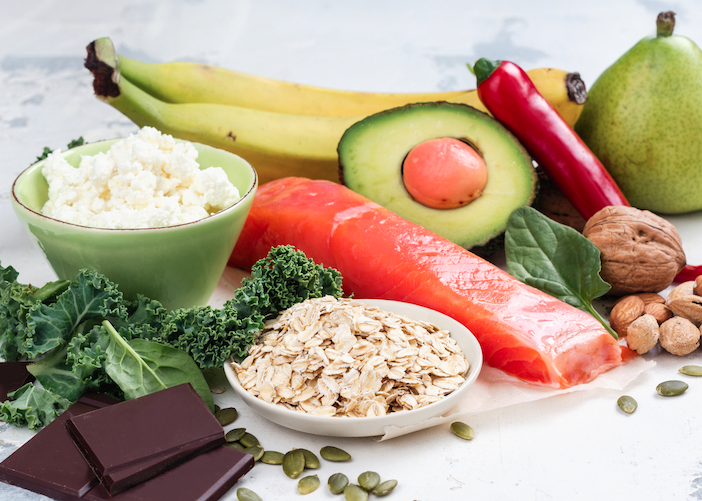 To understand the role of our diet in modulating testosterone, we’ll need to go over some basic endocrinology. As mentioned earlier, testosterone is one of the body’s primary anabolic hormones. It not only builds and maintains muscle mass, but it is also responsible for secondary sexual characteristics such as deepening of the voice, body hair distribution, and sexual development and function. The activity of testosterone is determined by two factors, the total amount you have floating around and the amount of “unbound” testosterone you have.
To understand the role of our diet in modulating testosterone, we’ll need to go over some basic endocrinology. As mentioned earlier, testosterone is one of the body’s primary anabolic hormones. It not only builds and maintains muscle mass, but it is also responsible for secondary sexual characteristics such as deepening of the voice, body hair distribution, and sexual development and function. The activity of testosterone is determined by two factors, the total amount you have floating around and the amount of “unbound” testosterone you have.
Leptin & Testosterone
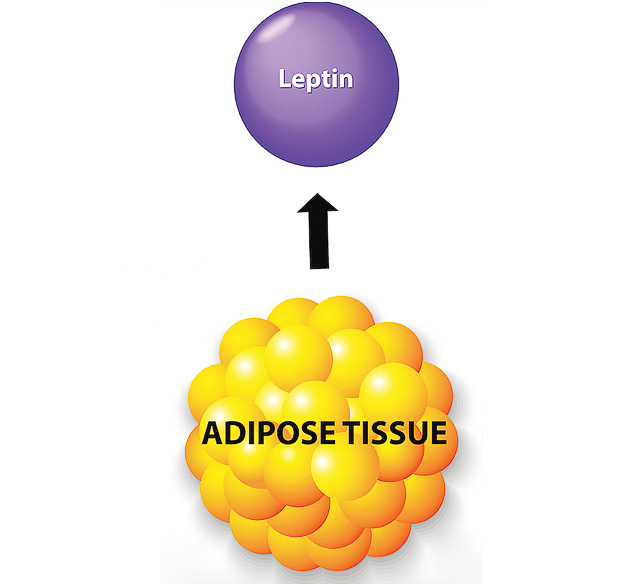 Your diet affects both your total and free testosterone levels. By diet I mean what you eat as well as how much. In adults, the HPG-axis is modulated by a hormone called leptin. Leptin is produced by fat cells. When a fat cell is “well fed” and happy, leptin production goes up. As leptin goes up, the hypothalamus senses this and tells the pituitary to tell the testes to produce more testosterone. So what makes fat cells well fed and happy? Eating enough calories! This relationship between leptin and the HPG-axis lies at the root of the difficulty of trying to gain muscle and lose fat at the same time. When you go on a diet or cut your carbs, leptin levels fall quickly and dramatically. As leptin levels fall, the hypothalamus responds by not telling the pituitary to tell the testes to make testosterone. The result is low “total” testosterone.
Your diet affects both your total and free testosterone levels. By diet I mean what you eat as well as how much. In adults, the HPG-axis is modulated by a hormone called leptin. Leptin is produced by fat cells. When a fat cell is “well fed” and happy, leptin production goes up. As leptin goes up, the hypothalamus senses this and tells the pituitary to tell the testes to produce more testosterone. So what makes fat cells well fed and happy? Eating enough calories! This relationship between leptin and the HPG-axis lies at the root of the difficulty of trying to gain muscle and lose fat at the same time. When you go on a diet or cut your carbs, leptin levels fall quickly and dramatically. As leptin levels fall, the hypothalamus responds by not telling the pituitary to tell the testes to make testosterone. The result is low “total” testosterone.
Testosterone & Your Liver
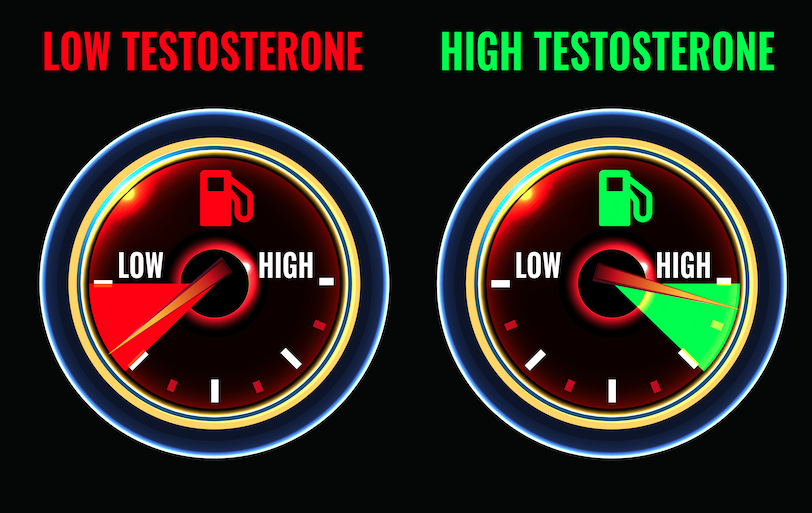 It was mentioned earlier that both total and free testosterone determine the effect of the testosterone you have. Free testosterone is controlled by the liver. SHBG is made in the liver. The production of SHBG is sensitive to…you guessed it: well fed, happy liver cells. How do you make a liver cell happy? You’ve got to eat enough calories, particularly carbohydrates. More specifically, it’s sucrose and fructose that have the greatest impact on SHBG levels. Pro bodybuilders are often criticized for being fat-phobic, and this next bit of info isn’t going to help any. The best way to increase your free testosterone levels is to eat enough simple sugars to kick start lipogenesis (fat building). In other words, you’ve got to eat enough carbs to get the liver to begin turning some of these carbs into fat. This decreases SHBG and frees up more testosterone. Likewise, as you begin to cut your carbs, the liver will increase SHBG production, and free testosterone will likewise fall.
It was mentioned earlier that both total and free testosterone determine the effect of the testosterone you have. Free testosterone is controlled by the liver. SHBG is made in the liver. The production of SHBG is sensitive to…you guessed it: well fed, happy liver cells. How do you make a liver cell happy? You’ve got to eat enough calories, particularly carbohydrates. More specifically, it’s sucrose and fructose that have the greatest impact on SHBG levels. Pro bodybuilders are often criticized for being fat-phobic, and this next bit of info isn’t going to help any. The best way to increase your free testosterone levels is to eat enough simple sugars to kick start lipogenesis (fat building). In other words, you’ve got to eat enough carbs to get the liver to begin turning some of these carbs into fat. This decreases SHBG and frees up more testosterone. Likewise, as you begin to cut your carbs, the liver will increase SHBG production, and free testosterone will likewise fall.
Low–Carb Diets Reduce Testosterone
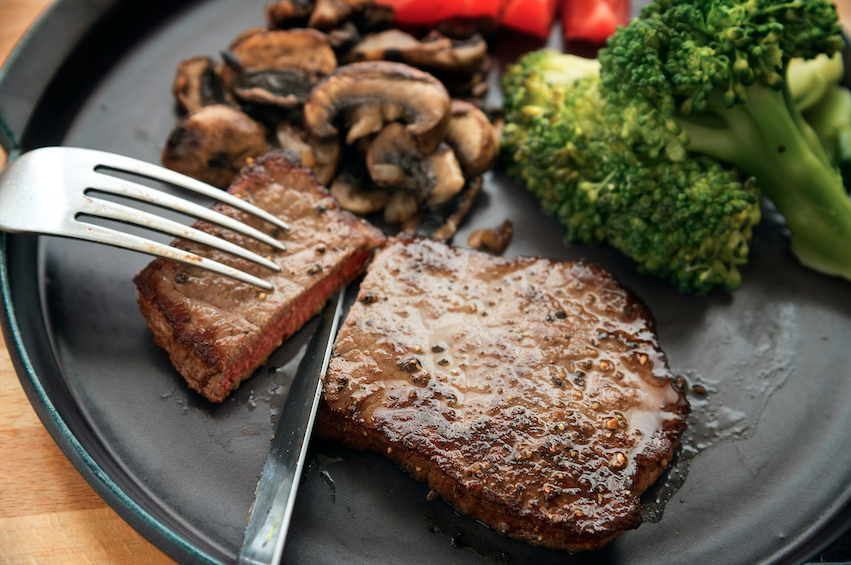 It’s easy for natural bodybuilders to get caught up in the low carb/high–protein lifestyle and then complain that they just can’t put on any real muscle. I’ve personally seen blood tests from lifters who’ve been drastically cutting carbs come back that had testosterone levels below 200 ng/dL. The lower limit to be called “normal” is 300, and even that’s not nearly enough to grow on!
It’s easy for natural bodybuilders to get caught up in the low carb/high–protein lifestyle and then complain that they just can’t put on any real muscle. I’ve personally seen blood tests from lifters who’ve been drastically cutting carbs come back that had testosterone levels below 200 ng/dL. The lower limit to be called “normal” is 300, and even that’s not nearly enough to grow on!
These guys have inadvertently dropped their testosterone levels from 500-600 down to 200 or less just by cutting their carbs too low!
Supplements
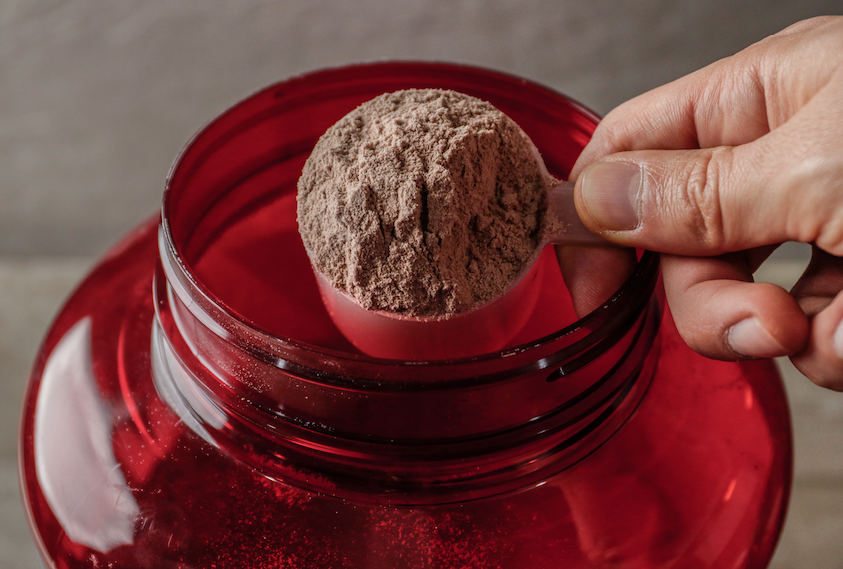 I mentioned that the right kind of supplement might affect testosterone levels. Have you guessed, after all we’ve discussed, what type of supplement would most likely increase testosterone levels? Is it tribulus? Is it saw palmetto? What about ZMA? Yes, but you also need a good old weight gainer. That’s right, one with whey isolate or whey concentrate for protein and that’s loaded with simple sugars. A good weight gainer will increase leptin levels and decrease SHBG. It will both increase total and free testosterone levels, thereby maximizing both the level and effects of testosterone.
I mentioned that the right kind of supplement might affect testosterone levels. Have you guessed, after all we’ve discussed, what type of supplement would most likely increase testosterone levels? Is it tribulus? Is it saw palmetto? What about ZMA? Yes, but you also need a good old weight gainer. That’s right, one with whey isolate or whey concentrate for protein and that’s loaded with simple sugars. A good weight gainer will increase leptin levels and decrease SHBG. It will both increase total and free testosterone levels, thereby maximizing both the level and effects of testosterone.
Weight Gainers
 Will there be any side effects to eating “enough” and using weight gainers? For some of us, yes. Some guys that use weight gainers to put on muscle mass will experience a couple signs of increased testosterone activity. For starters your skin may get a bit oilier if you’re prone to that. On top of that, some of you may notice that you’re breaking out more often. And finally, you will gain weight! I know what you might be thinking. Why would I want to get fat and get pimples? Well, I guess you have to ask yourself another question. Do I really want to do what it takes to naturally put on significant muscle mass? I can’t answer that question for you, but I can tell you that if you’re serious about building muscle, you better make sure you’re getting everything you possibly can out of your own testosterone production. That means eating enough calories, eating carbs, and even drinking carb-filled protein drinks and gainers! Do this and you can at least be confident that you’re jacked up on all you can to get the most bang from your body’s own testosterone.
Will there be any side effects to eating “enough” and using weight gainers? For some of us, yes. Some guys that use weight gainers to put on muscle mass will experience a couple signs of increased testosterone activity. For starters your skin may get a bit oilier if you’re prone to that. On top of that, some of you may notice that you’re breaking out more often. And finally, you will gain weight! I know what you might be thinking. Why would I want to get fat and get pimples? Well, I guess you have to ask yourself another question. Do I really want to do what it takes to naturally put on significant muscle mass? I can’t answer that question for you, but I can tell you that if you’re serious about building muscle, you better make sure you’re getting everything you possibly can out of your own testosterone production. That means eating enough calories, eating carbs, and even drinking carb-filled protein drinks and gainers! Do this and you can at least be confident that you’re jacked up on all you can to get the most bang from your body’s own testosterone.

